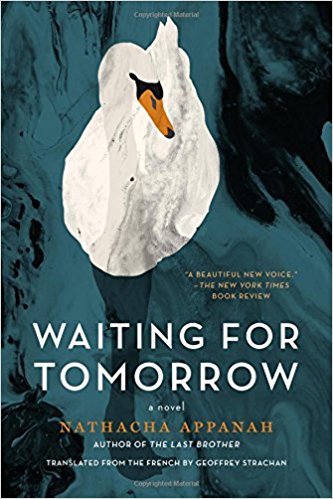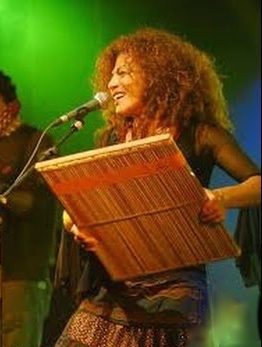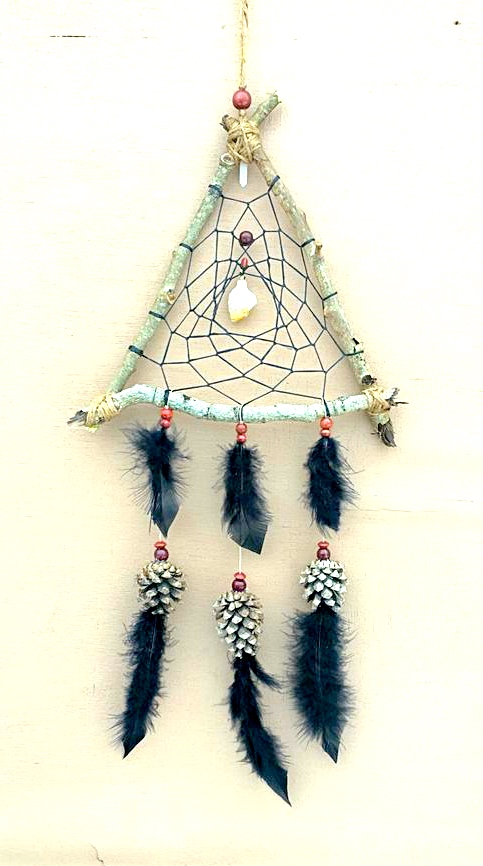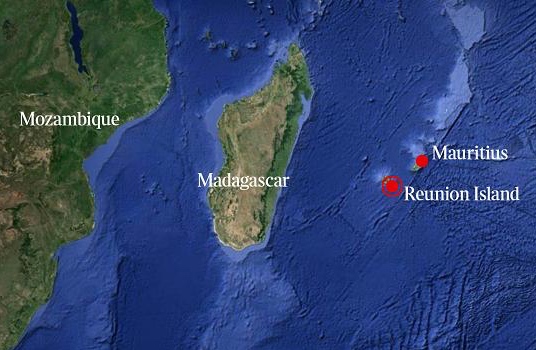“Dawn breaks over the horizon. It moves across the sea, soaring over the empty beach….It reaches the top of the hill and lingers there, gray and hazy for a moment, before suddenly plunging down the far side. It sweeps over houses, streets, trees, and flowers asleep on balconies. Down in the valleys it seems to dance, lightly, discreetly. It seeps into the forest and spills across the lake where no one ventures now since Adele drowned there four years, five months, and thirteen days ago.”—from the opening paragraph.
 The dawn continues on its way, finding Anita in her kitchen, wearing a gray pullover that belongs to her husband Adam. She has had a sleepless night, thinking about the old days, her forgotten dreams, about things left undone, and about Adele. The dawn enters the bedroom belonging to Laura, daughter of Anita and Adam, as she dreams that she is swimming in the lake – except she has forgotten that for the past four years, five months, and thirteen days she has been unable either to run or to perform swan dives, or to swim. As the dawn moves on, it “bathes the house and the forest in a dove gray color and makes its way across the fields and the mountain villages. When it reaches the front of the prison complex surrounded by barbed wire, Adam is on his feet, his face pressed against the little window, gripping the bars with both hands…waiting for the dawn, as he has been waiting for his release for four years, five months and thirteen days.” He thinks about the old days, the promises not kept, and about Adele. Standing there barefoot, he is, at last, “looking the dawn in the eye.”
The dawn continues on its way, finding Anita in her kitchen, wearing a gray pullover that belongs to her husband Adam. She has had a sleepless night, thinking about the old days, her forgotten dreams, about things left undone, and about Adele. The dawn enters the bedroom belonging to Laura, daughter of Anita and Adam, as she dreams that she is swimming in the lake – except she has forgotten that for the past four years, five months, and thirteen days she has been unable either to run or to perform swan dives, or to swim. As the dawn moves on, it “bathes the house and the forest in a dove gray color and makes its way across the fields and the mountain villages. When it reaches the front of the prison complex surrounded by barbed wire, Adam is on his feet, his face pressed against the little window, gripping the bars with both hands…waiting for the dawn, as he has been waiting for his release for four years, five months and thirteen days.” He thinks about the old days, the promises not kept, and about Adele. Standing there barefoot, he is, at last, “looking the dawn in the eye.”
In approximately six hundred words in the first two pages of this novel, author Nathacha Appanah provides the entire conclusion of the novel, taking the chance that the reader will become more interested in the circumstances which caused these disasters for her characters than in the ultimate results. It is a big chance. It does, however, give the author the opportunity to develop the characters – and interest in them – in what might otherwise appear to be a melodrama. Using flashbacks throughout, she then begins her narrative twenty years in the past, as Adam and Anita, both meet in Paris. Adam is from the rural suburbs, where he is a “woodcutter, cabinetmaker, painter/surfer,” someone who often “cannot find words to express” his feelings, and he has been in Paris at a school of architecture. He feels out of place at the New Year’s Eve party a friend has persuaded him to attend. Anita, attending the same party, has come to Paris from her native Mauritius ten years ago. A poet, she also feels left out – even homesick. Together, they make an odd couple as they discover and help each other, eventually marrying and becoming parents of a daughter, Laura. As time passes, however, Adam’s desire to become a painter, a new style of painter, and Anita’s desire to write a novel, which both have had to sacrifice in order to keep on top of things, financially, begin to wear on them, and they begin to quarrel.
Having set up the basis for a conflict, author Nathacha Appanah develops her story. When Adam is with his paints, “he is without fear, without guilt, without a path to follow, no meals to prepare, no laundry to hang, no shopping to do, no child to amuse…no sunlight coming in to interrupt is train of thought. He is creation itself.” Anita has been working hard to become noticed as a stringer for a newspaper, a job in which she is conscientious and hard-working, but she is regarded as an outsider at the newspaper, and sometimes comes across as a foreigner when she interviews subjects in this pre-women’s-lib era. A music concert by a group of maloya singers from Reunion, an island near her native Mauritius, finally gives her the opportunity to shine as a reporter, and she can hardly wait to write the story. “She feels as if her joy were trailing a great glittering train behind her and that this could carry the whole town with it…”
Part II introduces Adele, a woman from Mauritius who, for six years, has been working twelve-hour days taking care of the three children and the vast household of a wealthy family, then works three nights a week as a barmaid. Because she has come to France illegally, she wants to remain invisible, if possible, living on her own in a tiny room just nine feet by twelve. She avoids thinking about the reasons she has felt compelled to leave Mauritius. When a group of maloya singers from Reunion is hired to perform at the bar where she works, she is able to see the concert and enjoy its familiarity. Needless to say, she meets Anita, who soon becomes her first friend.
At this point, one-third of the way through the novel, the author has established her three adult characters and their backgrounds and has brought them together.
Additional information about all of them, fully described in lively, often lyrical prose, along with all the complications which come with that information, continues to be developed throughout the remainder of the novel. Gradually she involves the reader in the lives of her characters, especially in the lives of Anita and Adele. A section on the life of young Laura, child of Anita and Adam, involves the whole family in the story as both Anita and Adam make progress with their creative goals, Adam with his painting, and Anita with her writing. Eventually, the author leads the reader into the grand climax described in the opening paragraphs, revealing how the tragedies with which the novel opens have evolved. The drama is powerful and moving in its effects, as the reader cannot help but revisit the action to see if, or how, the details of the conclusion could have been avoided. Nathacha Appanah writes with passion and concern for her characters, and she develops that same concern in the reader as the characters meet their fates. As in real life, questions may remain for the reader. Sensitive, emotional, stimulating.
ALSO by Appanah: THE LAST BROTHER
PHOTOS. The author’s photo appears on https://www.lecteurs.com/
The Gare du Nord is from https://commons.wikimedia.org Photo by Claus Seyfried.
The woman playing the kayamba is seen on this video: https://www.emp3a.com/download/63-r5t5vGKU/kayamba-african-instrument.html
The dream-catcher made with feathers and small pine cones appears on https://www.pinterest.com/
The map showing Mauritius, Reunion, Madagascar, and Mozambique may be found here: https://www.pinterest.com/





